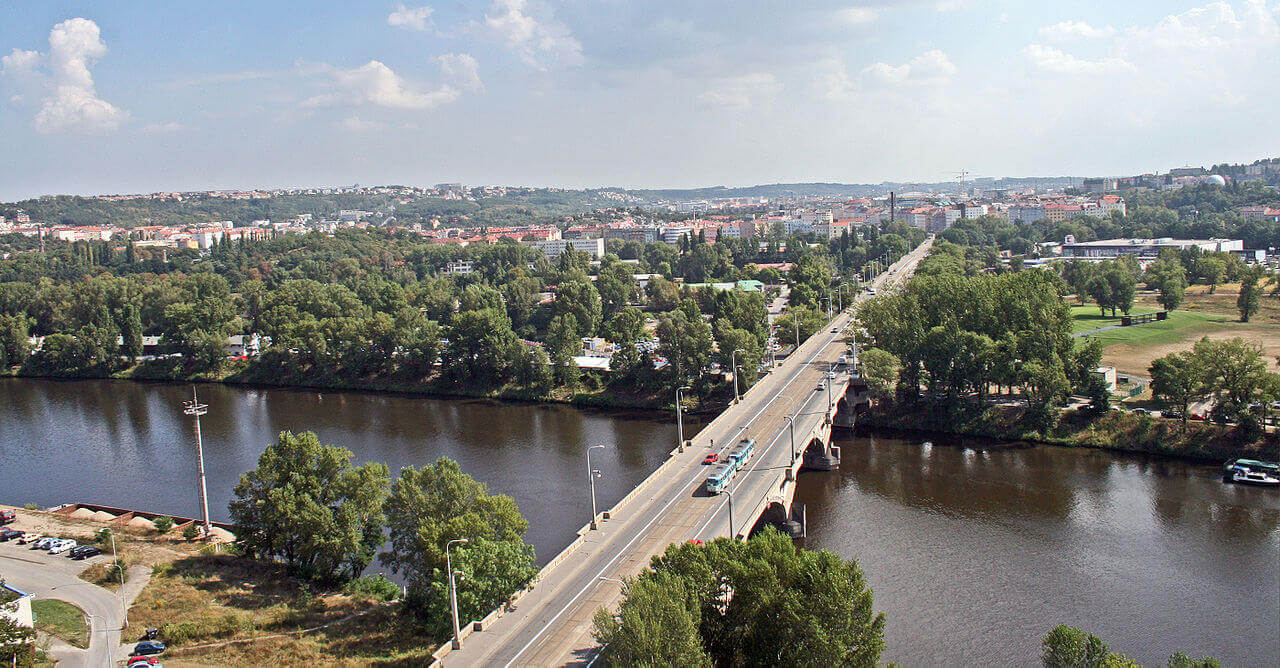Due to people with questionable mandates implementing even more questionable policies Czech national politics remains an irreconcilable mess. However, by only focusing on the highest corridors of power, the gloriously stupid decisions being made at the local level go overlooked.
With the autumn’s municipal elections fast approaching, perhaps more scrutiny over the country’s city halls is needed. Unfortunately, the last months have provided us with plenty of food for thought.
Prague’s infrastructure was rather collapse-happy in 2017. On December 2, a concrete footbridge decided staying in one piece just was not worth the bother and crashed into the river below, wounding four people.
As far as disasters go, it was fairly lackluster, except for one tiny issue: a safety check three weeks before gave the bridge a clean bill of health and reported no risks whatsoever.
Prague’s infrastructure was rather collapse-happy in 2017.
Prague’s mayor, Adriana Krnáčová of ANO, expressed clueless bewilderment — her go-to reaction for everything from widespread traffic congestion to a paper cut. Yet this would have been a perfectly understandable response to a bridge splitting in half completely out of the blue — as the latest safety report implied — had it not been for the several other reports.
In 2011, the remaining lifespan of the footbridge was determined to be five to seven years. Starting in 2012, the bridge was subjected to repeated safety checks to prevent exactly such a collapse and in 2014 a report claimed that the metal wire holding the structure in place was severely corroded and frayed, weakening the whole construction. This warning was repeated in 2016.
Yet the experts continued to proclaim that the bridge OK to use — even, rather amazingly, in the final report delivered after it collapsed.
The whole mess should have been little less than a minor embarrassment quietly swept under a rug and never repeated. But unfortunately, it is happening again, and on a much larger scale. Enter the Libeň bridge.
World’s biggest cycling road
Unlike the one that handed in its notice in December, the bridge connecting the districts of Libeň and Holešovice is in a more central position, fielding around 15,000 car and 1,000 tram crossings per day.
While this actually makes it one of Prague’s less frequented bridges, the Libeň tumbling down into the Vltava would make quite a splash — definitely enough to put whoever is responsible out of the running for the next election.
Unlike the foot bridge, this time we know that repairs are desperately needed — the bridge has had almost no maintenance since its completion in 1928. In January, it was even closed off while authorities tried to determine how bad things were and patch some of the more visible holes — all while effectively paralyzing Prague and turning the bridge into the world’s biggest cycling road for a month.
Turning the bridge into the world’s biggest cycling road for a month.
Something is rotten in the state of the Bridge (turns out it is the pillars) and a heated debate over who is to blame has already started. While politicians continue to shovel the responsibility on everyone else’s heads, two options have emerged: reconstruction on a massive scale or demolition — the latter being supported by the mayor as well as the councilor responsible for traffic and deputy mayor, Social Democrat Petr Dolínek.
A man with a curiously contradictory approach to his duties, Dolínek’s explanation for the bridge’s lack of maintenance — despite a 2016 resolution ordering it undergo repairs — is that the bridge has to be treated as a cultural monument. Take note, people: repairing cultural monuments is against the law (it actually is not), but demolition is OK.

To support his point of view, Dolínek keeps shoving a rather interesting expert report and survey in people’s faces. Closer scrutiny reveals that his expert board consists entirely of builders — no doubt expressing honest, unbiased opinions without any conflict of interest whatsoever — and that his survey consists of a whopping 80 people chosen without any regard for statistical methodology.
He has good reasons for this. Creatively crafted evidence aside, the biggest selling point of building a new bridge is that the paperwork for the project has already been issued and can be acted on — never mind that it was issued in 2014, two years before the decision to repair the bridge was taken.
But is it art?
For all his squirming, Dolínek has actually managed to accidentally pinpoint the second best reason why the Libeň bridge should not be torn down — the first one being that the proposed new bridge uses the existing pillars, the very ones that make the bridge dangerous in the first place. As the only Cubist bridge in Europe, the bridge is an architectonically unique structure.
This obviously means nothing if you happen to be a local politician trying to camouflage a long-term failure, but it managed to raise the alarm with some architects, activists, and the few remaining people who do not consider vulgarity an intrinsic part of politics.
One way or another, the Libeň bridge is going to fall.
Artistic merits of the bridge aside — it is hideous — what Dolínek is doing is an attempt to destroy a historical structure for reasoning that is shoddy at best and politically manipulative at worst.
In response to Dolínek and the Council’s actions, activists organized protests. Realistically, however, the chances of the protesters persuading the City Council to take a slightly less nonsensical stance on historical building demolition are slim to none.
There are no votes to gain and there is no real political drive against the project despite its all-too-obvious shortcomings. One way or another, the Libeň bridge is going to fall — the best hope is that it happens while Chief Demolitionist Dolínek happens to be doing an on-site inspection.
![Political Critique [DISCONTINUED]](https://politicalcritique.org/wp-content/uploads/2015/09/Political-Critique-LOGO.png)
![Political Critique [DISCONTINUED]](https://politicalcritique.org/wp-content/uploads/2015/09/Political-Critique-LOGO-2.png)